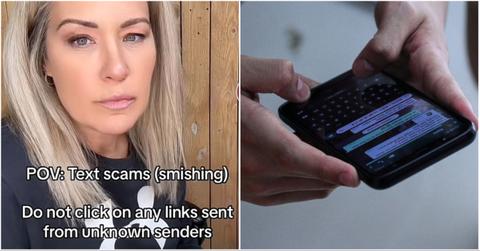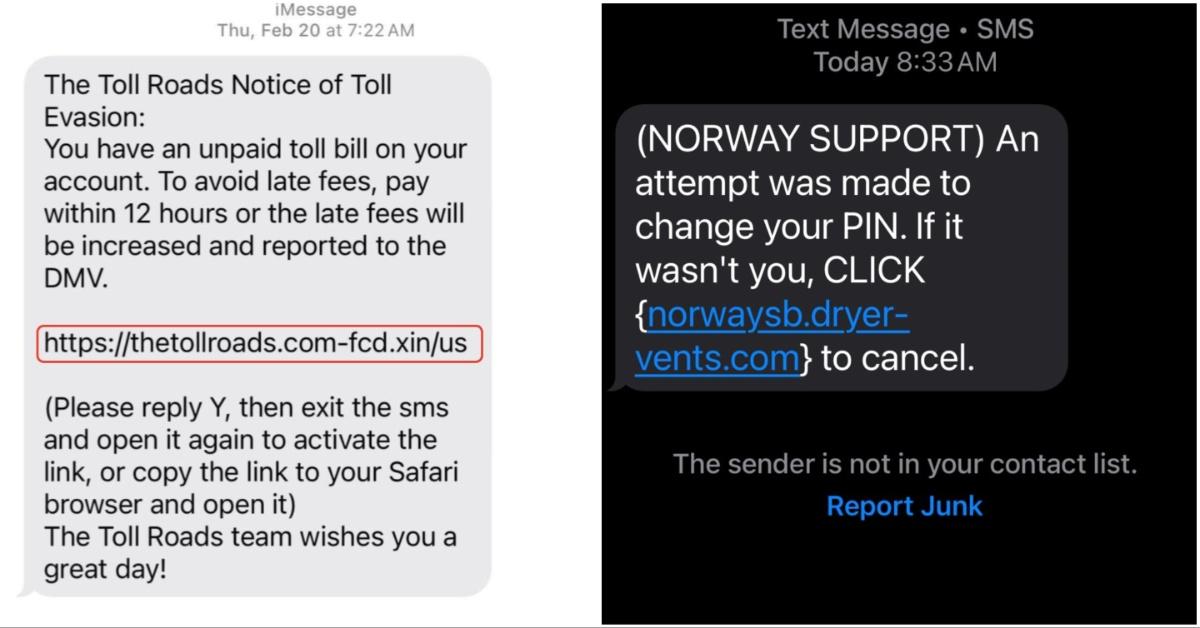What Is a Smishing Text? Understanding the Rising Threat of SMS Phishing Scams
Do you know how to tell if the text message you received might be trying to scam you?
Published March 13 2025, 11:48 a.m. ET
You know the drill. Your phone buzzes, and you glance down, expecting a text from a friend or maybe an update on a package. Instead, it's some random message telling you that you owe a toll fee, your bank account has been locked, or you need to "click here" to claim a refund.
It looks urgent. It looks official. And for a split second, you consider clicking — until you remember you have no unpaid tolls, no locked accounts, and no refund waiting for you. You’ve just become the recipient of a smishing text.
So, what is a smishing text? It’s a scam designed to make you panic, act fast, and give away personal information before you have time to think. It’s like phishing, but over text. If you feel like you’ve been receiving a higher volume of these texts, you aren’t alone. Unfortunately, smishing scams are on the rise and cybercriminals are getting better at making them seem real.
What is a smishing text, and why are they so convincing?
A smishing text is a fraudulent message designed to trick you into clicking a malicious link, calling a fake customer service line, or revealing sensitive information like passwords or banking details. Unlike traditional spam, these texts don’t usually come from obvious scam numbers. Instead, they might show up as random short codes, email addresses, or even spoofed numbers that make them look like they’re coming from a legitimate source.
What makes smishing so effective is the urgency. The message often claims there’s an issue with your account, an unpaid bill, or an important security alert that needs immediate action. The goal is to get you to react before you have time to question whether it’s real. These scams frequently impersonate banks, delivery services, or government agencies, making them difficult to spot at first glance.
Blocking these messages isn’t as simple as hitting "block caller." Many smishing texts don’t come from traditional phone numbers but from email addresses, making them harder to filter out. That’s part of what makes them so frustrating — just when you think you’ve stopped one, another pops up from a different source.
The FBI issued a warning as a toll fee scam surged in 2025.
If you’ve received a text claiming you owe a toll fee, you’re not alone. In 2025, the FBI and various law enforcement agencies began issuing warnings about a massive increase in smishing scams related to fake toll charges. These messages typically appear to come from highway authorities, urging recipients to pay a missed toll immediately. The text includes a link, and if you click, it takes you to a website that looks official but is designed to steal your credit card details.
The FBI’s San Antonio division highlighted this specific scam via social media, warning people not to click links or provide any personal information. Unfortunately, the scammers take advantage of the fact that most people are used to receiving official-looking texts from companies, so they don’t immediately question the legitimacy of the message. Likewise, this particular scam also preys on your fear of losing your driver's license if you don't act quickly.
The FBI also encourages both Apple and Android users to delete smishing texts immediately as they may also contain malware or steal your data just by being on your phone. Deleting the text also prevents you from accidentally clicking the link at a later time.
How can you stop smishing texts (or at least slow them down)?
Completely eliminating smishing texts isn’t easy, but there are ways to cut down on how many you receive. Never click on links in unsolicited texts, even if the message looks real. If you’re concerned, go directly to the company’s website instead of using the link provided.
Reporting smishing attempts can also help. Many phone providers, including AT&T, allow customers to forward spam texts to a designated number, such as 7726 (SPAM), which helps filter out future messages. You can also report smishing texts to the Federal Trade Commission (FTC) or sign up for the Do Not Call Registry, though this won’t stop every scam.
Some smartphones have built-in spam filters that can catch and block suspicious messages, but they aren’t perfect. Since many of these scams come from emails instead of phone numbers, they often slip through the cracks. Checking your phone’s messaging settings and enabling stricter spam filters may help reduce how many you receive.
Smishing isn’t going away anytime soon. Staying alert and knowing what to look for can help you avoid falling into the trap. If a text makes you panic, pause before you act, because that panic is exactly what scammers are counting on.

